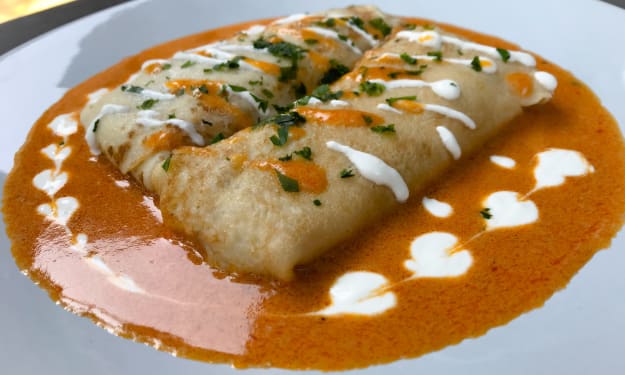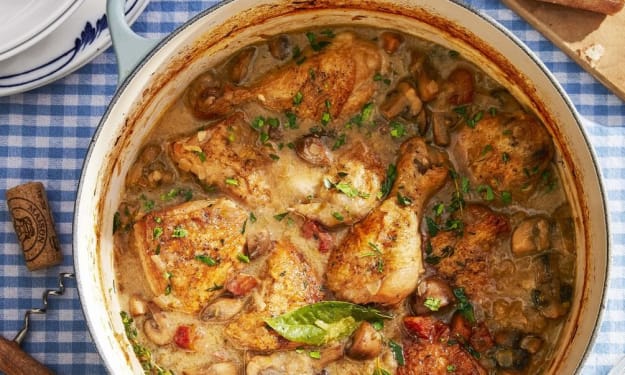The Fare of Knights and Maidens
Having a Feast in the Middle Ages

By the time the world reached the Middle Ages people were much more civilized and no longer went clubbing for their food. This is a look at how people cooked and ate in the Middle Ages which is a period from about the 5th to the 16th centuries. The cooking and eating habits that were established then was a base for the way people cook in Europe nowadays.
The Medieval Diet
First and most important in the medieval diet were cereals afterward there was rice and the potato didn’t arrive until 1536. The upper classes had wheat while those in the lower rungs had barley, oat, and rye. These came in the form of bread, porridge, gruel and pasta which were eaten by everyone. If one had meat it was mostly game and the most common were pork, chicken, and other fowl. The people in the north existed on fish such as cod and herring which were dried, smoked or salted. As there was no specific way to preserve food the working classes had simple, locally available and cheap food while the upper classes which could afford expensive spices with which to maintain their food had a greater variety to choose from. Some of the seasonings which were used in cooking among the upper classes were verjuice, wine, and vinegar along with spices such as black pepper, saffron, and ginger. They also used a lot of sugar or honey and almonds were used to thicken soups, stews, and sauces. Bread gained an important and significant place among foodstuffs because it was also used in religious rituals the only two other foodstuffs that had any real significance were olive oil and wine.
Eating Habits
Eating habits were restricted by the Roman Catholic and Eastern Orthodox Churches. During Lent, Advent and times of fasting meat couldn’t be eaten as well as all animal products including eggs and dairy. Fish wasn’t prohibited. Since the churches had ordained that feast should be alternated with fast then Wednesdays, Fridays and at times Saturdays were considered fast days. Fasting was meant to mortify the body and to invigorate the soul. It was also meant to be a reminder of what Christ sacrificed for humanity.
The word fish referred to a variety of aquatic animals even whales, barnacle geese, puffins, and beavers. There were no restrictions as to how much one could eat or to moderate drinking and eating sweets. On fish days when banquets were held the fish that was served was made to look like other foodstuffs that were not allowed to be eaten such as making fake eggs by taking empty egg shells, stuffing them with fish roe and almond milk and cooking them over coals.
Three Classes

In the Middle Ages, there were three classes – the commoners or working class, the clergy and the nobility. Among the nobility and the clergy were ranks which ranged from kings and popes to dukes and bishops and their subordinates like squires and priests. Everyone was expected to have respect for their own social class and to submit to those who ruled. Fresh game with exotic spices was reserved for the nobles while the workers dined on barley bread, salt pork and beans. It was thought that a lord’s digestive system needed finer sustenance than that of a worker. When merchants and traders accrued more wealth it was didactic literature and sumptuary laws that kept them in their place in society.
When it came to medical science in the Middle Ages then medieval scholars thought that the process of cooking didn’t end in the kitchen but continued in the body with the absorption of the food being eaten. Therefore it was thought that the stomach should be filled in a certain manner with more digestible foods being eaten first and the heavier afterward. Foods not of the same properties were not to be mixed together. Before each meal, it was common to drink an aperitif which could be hot or cold. Drinks were made with sugar or spices like ginger, caraway and anise, fennel or cumin seeds coated with honey, There was also wine and sweet milk drinks. At the end of the meal, one had a digestive. The most common being a dragee which had lumps of spiced sugar or a wine which was flavored with fragrant spices called hypocras and served with aged cheeses. The medieval meal would begin with fruit such as apples then came vegetables such as cabbage, purslane or lettuce and chicken or goat served with potages and broths. Afterward, there would be heavier fare such as pork or beef with vegetables and nuts.

Two Meals a Day
During this time in Europe there were two meals a day. During the afternoon one had dinner and in the evening they had supper. It was working men, young children, women, the elderly and the sick, who had some sort of breakfast. The church considered large dinner banquets and late-night partying to be immoral basically because of the usage of large amounts of alcoholic beverages, gambling, vulgar language and bad behavior. Within the households, families would dine together with their servants. It was considered that dining privately was ill-mannered however there were rich hosts who did dine in private chambers. Further, it was considered a privilege to be invited to dine in a lord’s chambers and there more extravagant meals could be served than in the common dining hall. When the wealthy dined their guests were offered basins and linen towels in order to wash their hands between courses. As far as women were concerned the wife of the host had to either eat privately along with her entourage or she had to eat very little at a feast. If she dined separately then she could rejoin her husband at the feast after the meal was finished. Basically, exclusive dining was considered to be done only by men and they would not bring along their wives. At lavish banquets, it was common to have shared drinking cups except at the high table where the lord of the manor sat.
Serving and Preparing Food
The food was served on plates or came in stew pots. The diners would then serve themselves from the dishes placing their food on trenchers of stale bread, wood, or pewter using spoons or with their hands. Lower classes ate food straight off of tables. Even though knives were used it was expected that guests would bring their own and would share their knives with others. It was not common to use forks until the 14th century and then at first only in Italy.
Food was prepared over open fires as stoves came round only in the 18th century. If one had an oven which was hard to construct then it was only in a very large household or in bakeries. If there was access to an oven then the community would share it. Portable ovens were made to be filled up with food and then buried in hot coals for the cooking process or larger ones were used by vendors selling pies on the streets. As to make better use of cooking over an open fire most people made their meals in stew pots and potages and stews were the most common dishes. Most everything was combined together as meat, fish, and eggs with fruit. The dishes had to adhere to the contemporary standards of medicine and dietetics. Each type of food had a specific way of preparation. Fish could be fried or baked using hot and dry spices, beef was boiled and pork always roasted.

An open hearth was found in the middle of the main living area so that there would be sufficient usage of heat. In wealthy household the kitchen could be combined with the dining hall. A separate kitchen area started to be common only toward the late Middle Ages. Basic cooking items were frying pans, pots, kettles and waffle irons. For cooking over open fires there were spits which varied in sized depending if one was cooking a bird or perhaps a whole oxen. Cranes with adjustable hooks were used so that one could swing pots and kettles away from the fire so that the food wouldn’t burn or boil over. Among utensils were used knives, spoons, ladles and graters. Since physicians believed that the finer food was the better it could be digested then food would be chopped, mashed, or strained. Foods that were fine-textured were a symbol of wealth like fine-milled flour. Noble or royal courts had hundreds of kitchen workers while common households could make do with firewood gathered in the woods. In a cookbook “Du fait de cuisine” (“On Cookery”) which was written in 1420 there are guidelines for making a two-day banquet. They were written by Maistre Chiquart who was the master chef of Amadeus VIII, Duke of Savoy. In the guidelines he recommends that the head cook should make sure that he has at least 1,000 cartloads of “good, dry firewood” and a large barn full of coal.
Preserving Foodstuff
In order to preserve foodstuffs many of them were dried to take out the moisture so that they would last longer. In southern climates, it was done by exposure to the sun and in northern climates by exposure to strong winds. Other methods were salting, brining, conserving or fermenting. One of the items that was heavily salted was butter. Pickled and closed up in tightly packed jars were vegetables, eggs or fish. Food could also be cooked in sugar, honey or fat thereby creating a seal around the food so that it could be stored longer. Alcoholic drinks were made from grains, fruit, and grapes. Cheeses and buttermilk were made from fermented milk.
Medieval Recipe – German 14th century
King’s Chicken
1 lb. cooked chicken
7 eggs
1/2 tsp. ground ginger
pinch ground anise
pinch saffron
Salt and pepper to taste
Pie crust
Mix the eggs and spices until well combined. Place the chicken in the pie crust and pour on the egg mixture. Bake in a 400 degree oven until done.
In translation, it says to take young grilled chickens, chop them up into bite-size pieces. Take the fresh eggs and mix them with ground ginger and a little anise. Pour all of this into a solid mortar which should be hot. Then sprinkle the chicken with the same spices added to the eggs. Place the chicken into a mortar, add saffron and salt to taste.
About the Creator
Rasma Raisters
My passions are writing and creating poetry. I write for several sites online and have four themed blogs on Wordpress. Please follow me on Twitter.






Comments
There are no comments for this story
Be the first to respond and start the conversation.